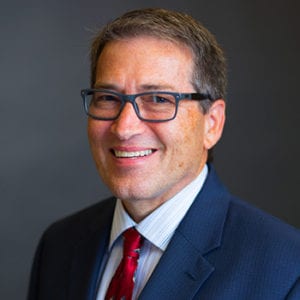Bringing sophisticated financial tools to the average investor

James Kent Treat • Plano, TX
Transamerica Financial Advisors, Inc. (TFA) • Transamerica Financial Group Division
Read full biography below
Proactive Advisor Magazine: Kent, why did you make the transition from IT professional to financial services? What was the appeal of a career in financial services?
I think I break the stereotype when it comes to people who have worked in the computer field and information technology. I have always been a people person and enjoy the back-and-forth with clients and colleagues. And though I majored in computer technology in college, I also took a strong interest in general business courses and finance.
So, there were always some elements of my personality and background that suggested that helping individuals with financial solutions was a good career fit for me. Having a solid quantitative and software background has been beneficial, since our profession calls on us to be technically adept and analytical, in addition to having strong people skills.
When I transitioned into financial services, I was working as a consultant with my own practice and had some flexibility in my schedule. I happened to be seeking financial advice from someone who later turned out to be my mentor in the financial field. He suggested that I might like to try working as a financial advisor.

I put in a lot of time, study, and field work as I acquired my licenses and entered the business on a part-time basis. I did that for several years, essentially working two jobs. I was immediately attracted to many aspects of the financial-services industry, especially what I saw as a great opportunity to help middle-income individuals. The hallmark of our practice is working with everyday individual and business clients, who traditionally were not aware that they could make use of the sophisticated financial tools thought to be exclusive to high-net-worth individuals. I am certain I made the right decision in pursuing a new career path back in 2004 and love working with my clients and my associates.
“The hallmark of our practice is working with everyday clients, who traditionally were not aware that they could make use of sophisticated financial tools.”
Talk about how you approach working with clients.
The simple objective is to help people plan for their future, though the tools can be very sophisticated. We start with comprehensive information gathering and then put a financial plan together, working very closely with the client’s inputs. I explain to clients that if you want to go someplace on a trip, the smart thing is to determine what resources you need to get there and then figure out the best route. Planning their financial future is no different—they need to first take inventory of current and future resources and then map out a plan to get to where they want to go. I am there to help them figure out the best vehicles, or tools, to help them reach their destination.
We consider six major areas: protection of assets and income, emergency funding, debt management, legacy planning, retirement planning, and asset growth. We will address all six of these areas in developing a plan, but different clients have different priorities. If tax-advantaged planning, especially with regard to retirement and investment strategies, is important, we have relationships with CPAs who can help address these issues. Legacy planning, in most instances, should involve the services of a highly qualified attorney.
Retirement planning is the number one concern of most of our clients. How can we help them develop strategies that create an adequate and, hopefully, comfortable stream of income in retirement? Once we have gone through the financial needs analysis and formulated a basic plan, we can then focus on developing the income portion of the plan. This starts with an analysis of what resources they will have available. What will their Social Security benefits look like and what claiming strategies might be favorable? Do they have a defined benefit pension or a defined contribution plan? Do they own any annuities that will throw off income? Do they have income-producing assets, such as real estate holdings? After thoroughly exploring these areas, invariably clients will need to create an additional stream of income to meet their inflation-adjusted income needs in the future. This is where we may need to put some of their assets to work to generate growth for the future.
What tools do you use for the growth portion of the plan?
It depends on the client, their overall financial situation, and their attitude toward risk. Our relationship with TFA gives us access to sophisticated tools, and this includes many alternatives among annuity or insurance products. One or more of those might be part of the solution. Frequently, we are also looking at risk-managed investment strategies through third-party money managers. These can also come in many different strategic alternatives, from very conservative strategies to fairly aggressive.
I talk to clients about the concept of active money management. In general, the strategies we use have the ability to take a defensive posture if the market environment calls for that—at the very least the ability to go to cash, but some strategies can be more aggressive during a down market. For individuals who have lived through the early 2000s bear market and the 2008 financial crisis, there is naturally some level of anxiety about equity-based strategies. So, I need to address this issue head on.

Depending on the client’s specific situation, there are two fundamental ways to deal with their concerns. First, we have an extremely wide range of strategic solutions. There are many ways to diversify and manage risk: by asset class diversification, by manager diversification, and by strategy diversification. For individuals who took large losses during the last two market crashes through a passive equity allocation, it can be a real eye-opener to consider the many different alternatives for risk management within their portfolios.
Second, we introduce concepts such as maximum drawdown. This can help quantify what a client’s maximum loss exposure would be if the market turns very negative. Though there are no absolute guarantees in investing, this is a very reassuring exercise. We can look at a strategy or blended strategies and map out how they would have performed during the last two bear markets. Through this type of discussion with a client, and the presentation of clear strategic alternatives, we will develop a specific portfolio recommendation. We believe this will help provide managed growth for their assets, with a goal of protecting against severe market losses.
Let me use the example of some of my clients who are in the information technology field. I explain two core concepts that these clients, who typically have an analytical orientation, may really appreciate.
Number one, I explain that the highly qualified managers we use work exclusively in managing portfolio strategies. Their firms are literally watching the markets 24/7, and their models, systems, algorithms, and indicators are always working on behalf of clients. My role as an advisor covers a number of responsibilities that have me working directly with clients, whether in or out of the office. So, it makes perfect sense to have a division of duties, so to speak, where I am primarily working on relationship management and strategic planning, and our money managers are doing what they do best in terms of implementing and monitoring their strategies. This does not mean that I abdicate responsibility in that area, and I am constantly reviewing strategy performance versus objectives. But it does mean that investment professionals are handling the day-to-day management of our clients’ strategies. That is a real plus.
Second, I talk about the quantitative nature of modern active management. We agree with clients upfront on their objectives, their time horizons, their risk tolerance, how much standard deviation—or volatility—they can tolerate, and how deep a potential drawdown they are comfortable with. The strategies we use might have very short-term trading components to them, but their objectives are usually mid-term to long-term in nature—they are built to work over complete market cycles.
These are sophisticated, rules-based strategies that are intended to remove emotion from the investment decision-making process. Understanding how the strategies work helps clients feel less emotional about their own portfolios and be less concerned about every gyration in the markets.
We want to build investment models and complete portfolios for clients that can survive and maneuver in whatever conditions the markets throw at us. As we go through the education process, I firmly believe my clients come to see how that philosophy and approach can help them plan and invest wisely for their future.
 James Kent Treat has been in the financial-services industry for 12 years and an investment advisor representative with Transamerica Financial Advisors, Inc., since 2012. He “provides financial solutions for individuals and companies based on where they desire to go” and says that his goal is to “have each person be inspired that they can be in a better financial situation by expanding their relationship with my company.”
James Kent Treat has been in the financial-services industry for 12 years and an investment advisor representative with Transamerica Financial Advisors, Inc., since 2012. He “provides financial solutions for individuals and companies based on where they desire to go” and says that his goal is to “have each person be inspired that they can be in a better financial situation by expanding their relationship with my company.”
Mr. Treat was raised in Oklahoma and attended Oklahoma Christian University, where he earned a bachelor’s degree in computer science. His involvement with computers began at a relatively young age. He worked in the information technology (IT) department of the Oklahoma State Treasurer Office when he was in high school and college. Following college, Mr. Treat pursued a career in IT, specializing in the medical field, and eventually started his own consulting firm.
Following several years of consulting, Mr. Treat became a financial professional on a part-time basis and says he saw “a tremendous opportunity, offering the chance to both help people in an important area of their lives and to grow a rewarding business.” His focus now is on “bringing sophisticated financial tools to the average investor.”
Mr. Treat is married and has two daughters and a son-in-law. He was an accomplished track athlete in high school and later participated in triathlons. He is involved in his church; teaches Sunday school for junior high students; and participates in several charitable activities, including volunteering at the local food bank. He enjoys spending time with his family, mountain biking, and staying fit.
Disclosure: Kent Treat is a Registered Representative and an Investment Advisor Representative with Transamerica Financial Advisors, Inc. (TFA), Transamerica Financial Group Division. Securities and Investment Advisory Services offered through TFA, Transamerica Financial Group Division, member FINRA, SIPC, and a Registered Investment Advisor. Nonsecurities products and services are not offered through TFA.TFG009820-10/16
Photography by Caprock Studios

